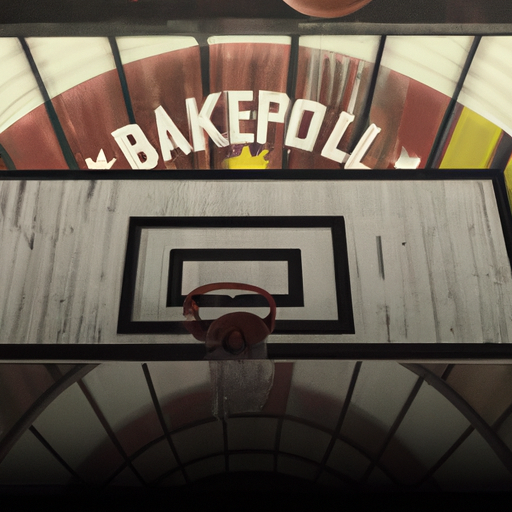Hoops and Heritage: The Rich Legacy of Basketball in the Philippines

Check out Hoops and Heritage: The Rich Legacy of Basketball in the Philippines at https://winzir.ph/sports and discover the fascinating history and culture of basketball in the country. Don’t miss out on this exciting opportunity to learn more about one of the Philippines’ most beloved sports!
The Evolution of Basketball in the Philippines
Basketball is a sport that has captured the hearts of millions of Filipinos. It is a game that has become deeply ingrained in the country’s culture and has become a source of national pride. The Philippines has a rich legacy of basketball, and its evolution over the years is a testament to the passion and dedication of its people.
Basketball was introduced to the Philippines by American soldiers during the colonial period. The first recorded game was played in 1902, and it quickly gained popularity among Filipinos. The sport was initially played by the elite, but it soon spread to the masses, and it became a staple in schools and communities across the country.
In the early years, basketball was played on dirt courts with makeshift hoops. The rules were simple, and the game was played with a lot of enthusiasm and energy. As the sport grew in popularity, it became more organized, and the rules were standardized. The first national basketball championship was held in 1913, and it was won by the Manila Athletic Club.
The 1920s and 1930s were a golden age for Philippine basketball. The sport was played at a high level, and the country produced some of the best players in Asia. The Philippines won the gold medal in basketball at the Far Eastern Championship Games in 1913, 1915, 1917, 1919, 1921, 1923, 1925, 1927, 1929, 1930, 1934, and 1938. The country’s dominance in the sport was unparalleled, and it cemented its reputation as a basketball powerhouse.
The 1940s and 1950s were a difficult period for Philippine basketball. The country was ravaged by World War II, and the sport suffered as a result. However, it bounced back in the 1960s, and the country once again became a force to be reckoned with in international basketball. The Philippines won the gold medal in basketball at the Asian Games in 1962 and 1966, and it finished third at the FIBA World Championship in 1954.
The 1970s and 1980s were a period of transition for Philippine basketball. The sport became more commercialized, and professional leagues were established. The Philippine Basketball Association (PBA) was founded in 1975, and it quickly became the premier basketball league in the country. The PBA attracted some of the best players in the world, and it helped to raise the profile of Philippine basketball.
The 1990s and 2000s were a time of consolidation for Philippine basketball. The sport continued to grow in popularity, and it became more accessible to the masses. The country hosted the FIBA World Championship in 1978, and it finished fourth. The Philippines also won the gold medal in basketball at the Southeast Asian Games in 1991, 1993, 1995, 1997, 1999, 2001, 2003, 2005, 2007, 2009, 2011, 2013, and 2015.
Today, basketball is more popular than ever in the Philippines. The sport is played at all levels, from the grassroots to the professional leagues. The PBA is still going strong, and it continues to attract some of the best players in the world. The country also has a strong national team, and it is a regular participant in international competitions.
In conclusion, the evolution of basketball in the Philippines is a testament to the passion and dedication of its people. The sport has come a long way since its introduction in the early 1900s, and it has become deeply ingrained in the country’s culture. The Philippines has a rich legacy of basketball, and it is a source of national pride. The sport will undoubtedly continue to grow and evolve in the years to come, and it will remain an integral part of the country’s heritage.
The Impact of Basketball on Filipino Culture

Basketball is more than just a sport in the Philippines. It is a cultural phenomenon that has captured the hearts of millions of Filipinos. The game has become an integral part of the country’s identity, and its impact on Filipino culture is undeniable.
Basketball was introduced to the Philippines by American soldiers during the colonial period. It quickly gained popularity among Filipinos, who saw it as a way to connect with their American counterparts. Over time, basketball became a national obsession, with Filipinos of all ages and backgrounds playing the game on makeshift courts in their neighborhoods.
Today, basketball is deeply ingrained in Filipino culture. It is played in schools, parks, and community centers across the country. It is also a major source of entertainment, with professional leagues drawing large crowds and generating significant revenue.
The impact of basketball on Filipino culture can be seen in many different ways. For one, it has helped to foster a sense of community and camaraderie among Filipinos. Playing basketball together is a way for people to bond and build relationships, regardless of their social status or background.
Basketball has also become a symbol of Filipino pride and resilience. Despite facing numerous challenges and setbacks, Filipinos have continued to embrace the game and excel at it. Many of the country’s top basketball players have gone on to achieve international success, representing the Philippines on the world stage.
In addition to its cultural significance, basketball has also had a significant economic impact on the Philippines. The sport has created jobs and opportunities for many Filipinos, from professional players to coaches, referees, and support staff. It has also helped to drive tourism, with basketball fans from around the world coming to see the country’s top teams in action.
Despite its many benefits, however, basketball in the Philippines is not without its challenges. One of the biggest issues facing the sport is the lack of infrastructure and resources. Many communities do not have access to proper courts or equipment, making it difficult for young people to develop their skills and pursue their dreams of playing professionally.
Another challenge is the prevalence of corruption and unethical practices in the sport. From match-fixing to bribery and other forms of misconduct, these issues have tarnished the reputation of basketball in the Philippines and undermined the integrity of the game.
Despite these challenges, however, basketball remains a beloved and integral part of Filipino culture. Its rich legacy and enduring popularity are a testament to the resilience and passion of the Filipino people. As the sport continues to evolve and grow, it will undoubtedly continue to shape and influence the culture of the Philippines for generations to come.
Exploring the Future of Basketball in the Philippines
Basketball is more than just a sport in the Philippines. It is a cultural phenomenon that has captured the hearts of millions of Filipinos. The game has a rich legacy in the country, dating back to the early 1900s when American soldiers introduced it to the locals. Since then, basketball has become a part of the Filipino way of life, with the sport being played in every corner of the country, from the streets to the professional leagues.
The Philippines has a long history of producing talented basketball players, with some of the most notable names including Robert Jaworski, Allan Caidic, and Alvin Patrimonio. These players have not only brought glory to the country but have also inspired a new generation of basketball enthusiasts. Today, basketball is the most popular sport in the Philippines, with millions of fans tuning in to watch their favorite teams and players compete.
Despite the popularity of basketball in the Philippines, the country has yet to make a significant impact on the international stage. The Philippine national team, also known as Gilas Pilipinas, has had some success in regional competitions but has yet to qualify for the Olympics or the FIBA World Cup. This has led to calls for the country to invest more in its basketball program and develop its young talent.
One of the challenges facing Philippine basketball is the lack of infrastructure and resources. Many young players do not have access to proper training facilities or coaching, which hinders their development. Additionally, the country’s professional leagues, such as the Philippine Basketball Association (PBA), have been criticized for not doing enough to support grassroots basketball and develop young talent.
To address these challenges, the Philippine government and private organizations have launched initiatives to promote basketball and develop young players. One such initiative is the Jr. NBA program, which aims to teach basketball fundamentals to young players and promote sportsmanship and teamwork. The program has been successful in identifying and developing young talent, with several Jr. NBA alumni going on to play in the PBA and other professional leagues.
Another initiative is the Samahang Basketbol ng Pilipinas (SBP), the country’s national basketball federation. The SBP has been working to improve the country’s basketball infrastructure and develop young talent through its grassroots programs. The federation has also been working to strengthen the Philippine national team, with the goal of qualifying for the Olympics and the FIBA World Cup.
The future of basketball in the Philippines looks bright, with the country’s young talent showing promise and initiatives being launched to support their development. However, there is still much work to be done to ensure that the country can compete at the highest level of international basketball. This includes investing in infrastructure and resources, developing coaching and training programs, and strengthening the country’s professional leagues.
In conclusion, basketball has a rich legacy in the Philippines, with the sport being a part of the country’s cultural identity. While the country has produced many talented players, it has yet to make a significant impact on the international stage. However, with initiatives being launched to promote basketball and develop young talent, the future of Philippine basketball looks promising. It is up to the government, private organizations, and basketball enthusiasts to work together to ensure that the country can compete at the highest level of international basketball and continue to inspire future generations of Filipino basketball players.

